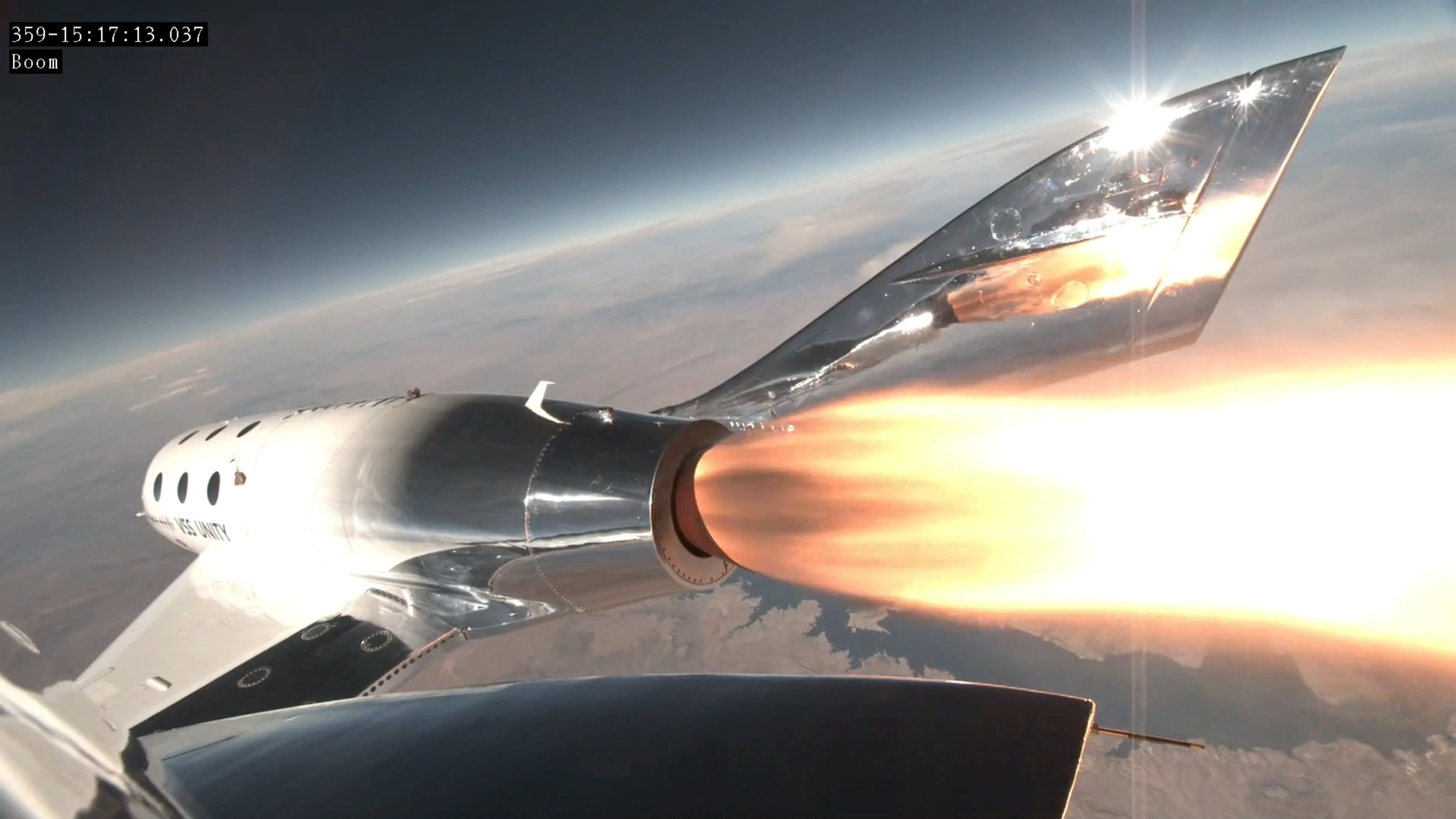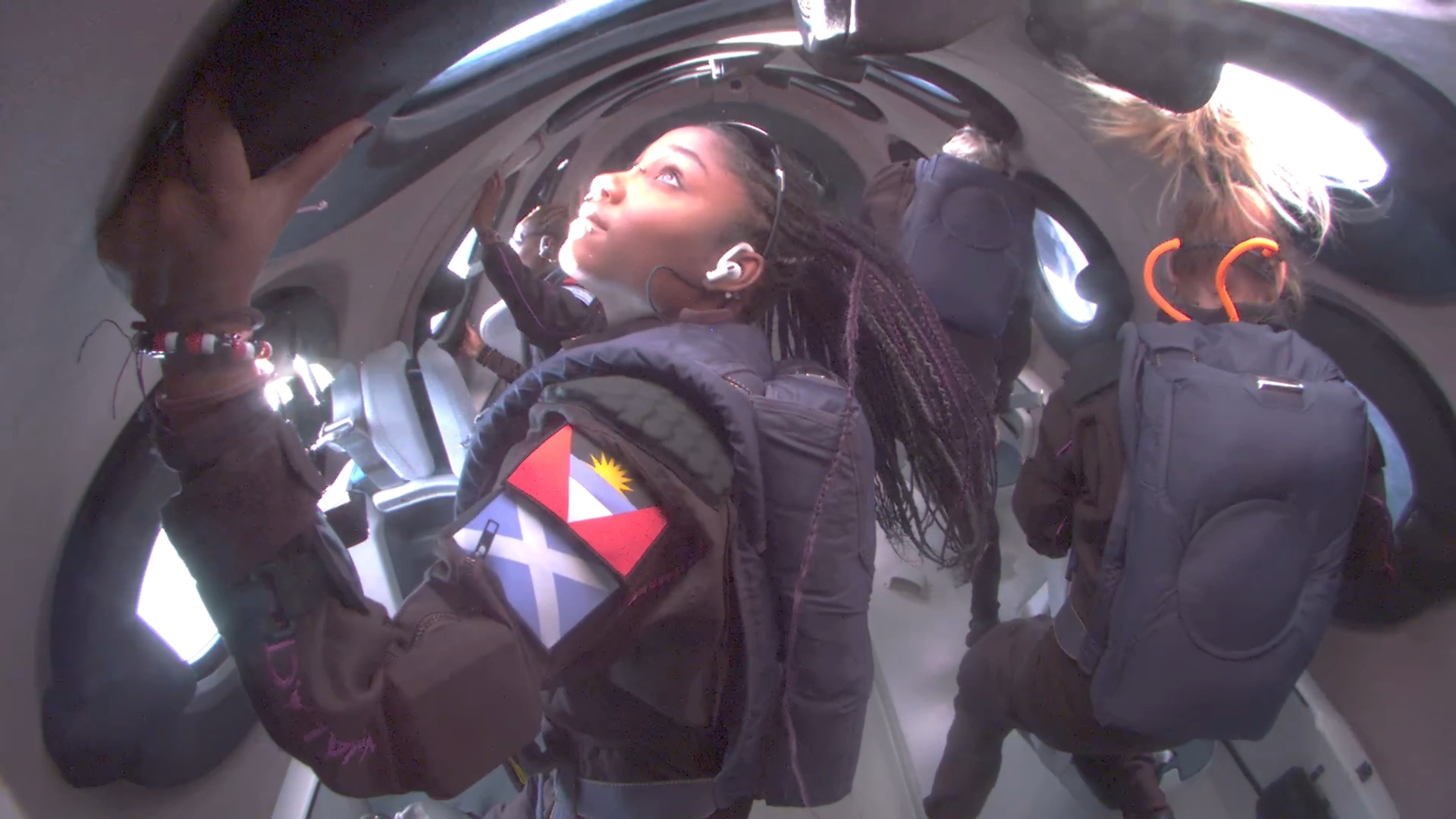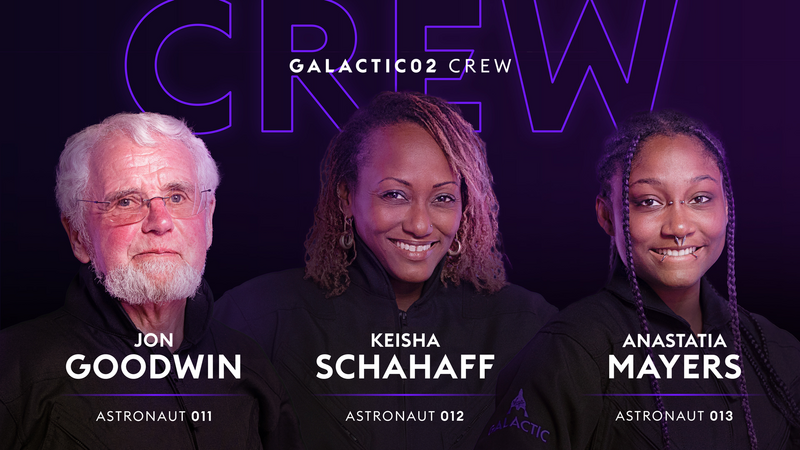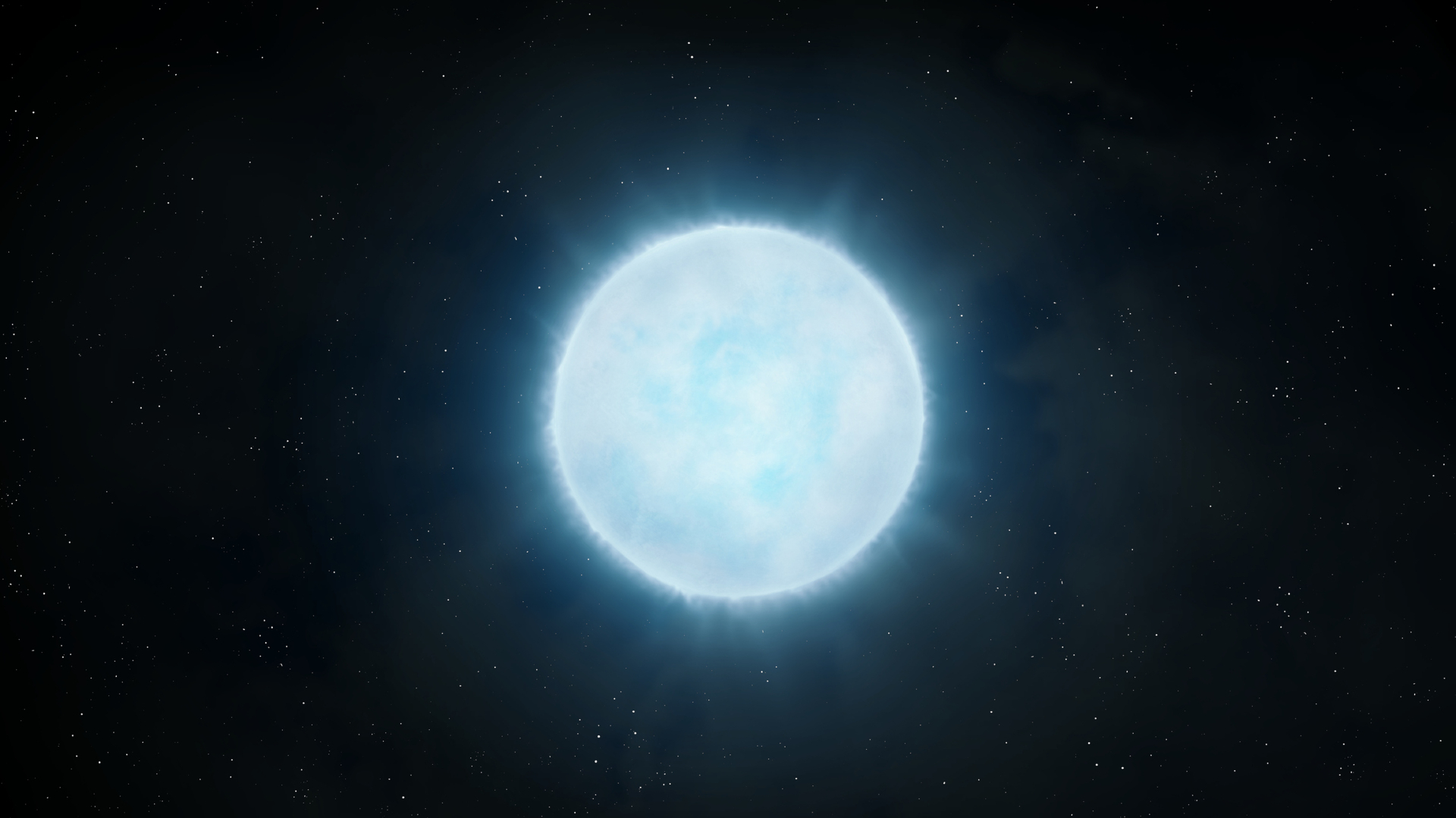Virgin Galactic launches 1st mother-daughter team and 1st Olympian to space on 2nd commercial flight (video)
Virgin Galactic just aced its second-ever commercial mission, setting a number of spaceflight records in the process.
The company launched its "Galactic 02" flight today (Aug. 10), sending six people to suborbital space and back. Four of them were women, setting a new mark for most women on a single spaceflight, according to Virgin Galactic. (Four women were in Earth orbit simultaneously back in 2010, but they served on two different missions.)
And three of those six were private passengers, each of whom blazed a new trail for space tourism. They included the first mother-daughter duo (one of whom became the youngest-ever spaceflyer), as well as the first former Olympian, to reach the final frontier.
"G 02 is a flight for the history books," Virgin Galactic's Sirisha Bandla, who reached space with the company during a July 2021 flight, said during a webcast of today's launch.
Related: Meet the crew of Virgin Galactic's 2nd commercial spaceflight
Virgin Galactic employs an air-launch system, which consists of the six-passenger VSS Unity space plane and a twin-fuselage carrier aircraft called VMS Eve. Eve hauls Unity to an altitude of about 50,000 feet (15,000 meters), then drops the space plane, which lights up its rocket motor to ascend to suborbital space.
Eve lifted off from Spaceport America in New Mexico today at 10:30 a.m. EDT (1430 GMT) and dropped Unity roughly 45 minutes later. The space plane reached a maximum speed of Mach 3 on Galactic-02 — three times the speed of sound — and a peak altitude of 55 miles (88.5 kilometers) before heading back down to Earth. It aced a runway touchdown at Spaceport America at 11:30 a.m. EDT (1530 GMT), according to Virgin Galactic.
Breaking space news, the latest updates on rocket launches, skywatching events and more!
The Galactic 02 crew, like all of Unity's passengers, experienced a few minutes of weightlessness today and got to see the curve of Earth against the blackness of space.
A ticket to ride the space plane currently costs $450,000. Two of Galactic 02's three private passengers didn't pay their own way, however. Keisha Schahaff, who was born and raised in the Caribbean nation of Antigua and Barbuda, won a seat during a fundraising competition organized by Virgin Galactic and Space for Humanity, a nonprofit that aims to make space accessible to a wider range of people.
Schahaff's win gave her two tickets, and she gave the second to her 18-year-old daughter Anastatia Mayers, who's studying philosophy and physics at Aberdeen University in the United Kingdom. In addition to the mother-daughter mark, the duo became the first women from a Caribbean nation to reach space, according to Virgin Galactic.
"When I was two years old, just looking up to the skies, I thought, 'How can I get there?' But, being from the Caribbean, I didn't see how something like this would be possible," Schahaff said before flight in a statement. "The fact that I am here, the first to travel to space from Antigua, shows that space really is becoming more accessible. I know I will be changed by my experience, and I hope I will be able to share that energy and inspire the people around me — in my role as a life coach, a mother and as an ambassador for our beautiful planet."
Mayers became the youngest person to reach space, according to Virgin Galactic. The previous mark was held by Oliver Daemen, who was also 18 when he flew to suborbital space with Jeff Bezos' Blue Origin in July 2021.
The third private passenger, 80-year-old Jon Goodwin, apparently did pay his own way. Goodwin competed as a canoeist for the United Kingdom in the 1972 Summer Olympics in Munich; today, he became the first former Olympian to reach space.
He's also just the second person with Parkinson's to make it to the final frontier, according to Virgin Galactic. Goodwin was diagnosed with the disease nine years ago but has vowed not to let it stop him from chasing his dreams.
"From becoming an Olympian to canoeing between the peaks of Annapurna, to winning a six-day race in the Arctic Circle, climbing Mount Kilimanjaro (and cycling back down), I've always enjoyed rising to new challenges," Goodwin said in a preflight statement. "When I was diagnosed with Parkinson's in 2014, I was determined not to let it stand in the way of living life to the fullest. And now for me to go to space with Parkinson’s is completely magical. I hope this inspires all others facing adversity and shows them that challenges don’t have to inhibit or stop them from pursuing their dreams."
The fourth person in Unity's cabin today was Beth Moses, Virgin Galactic's chief astronaut instructor. She trained Schahaff, Mayers and Goodwin and went up today primarily to gather data to inform and improve the passenger experience on future flights.
Unity's two pilots, C.J. Sturckow and Kelly Latimer, also reached the final frontier on Galactic 02. Latimer, Moses, Schahaff and Mayers made Unity the first vehicle ever to take four women to space on a single flight. (Eve's two pilots, Mike Masucci and Nicola Pecile, did not reach the final frontier; the carrier plane does not make it anywhere near space.)
Related: The first space tourists (photos)
Galactic 02 was the seventh spaceflight overall for Virgin Galactic and VSS Unity. The first five were test flights, which occurred in December 2018, February 2019, May 2021, July 2021 and May 2023.
By the way, the July 2021 mission — the one Bandla flew on — included Virgin Group founder Richard Branson among its passengers.
The company's first commercial mission, Galactic 01, lifted off from Spaceport America on June 29, carrying four people aloft for the Italian Air Force and the country's National Research Council. So Galactic-02 notched another first for Virgin Galactic: its first private astronaut mission.
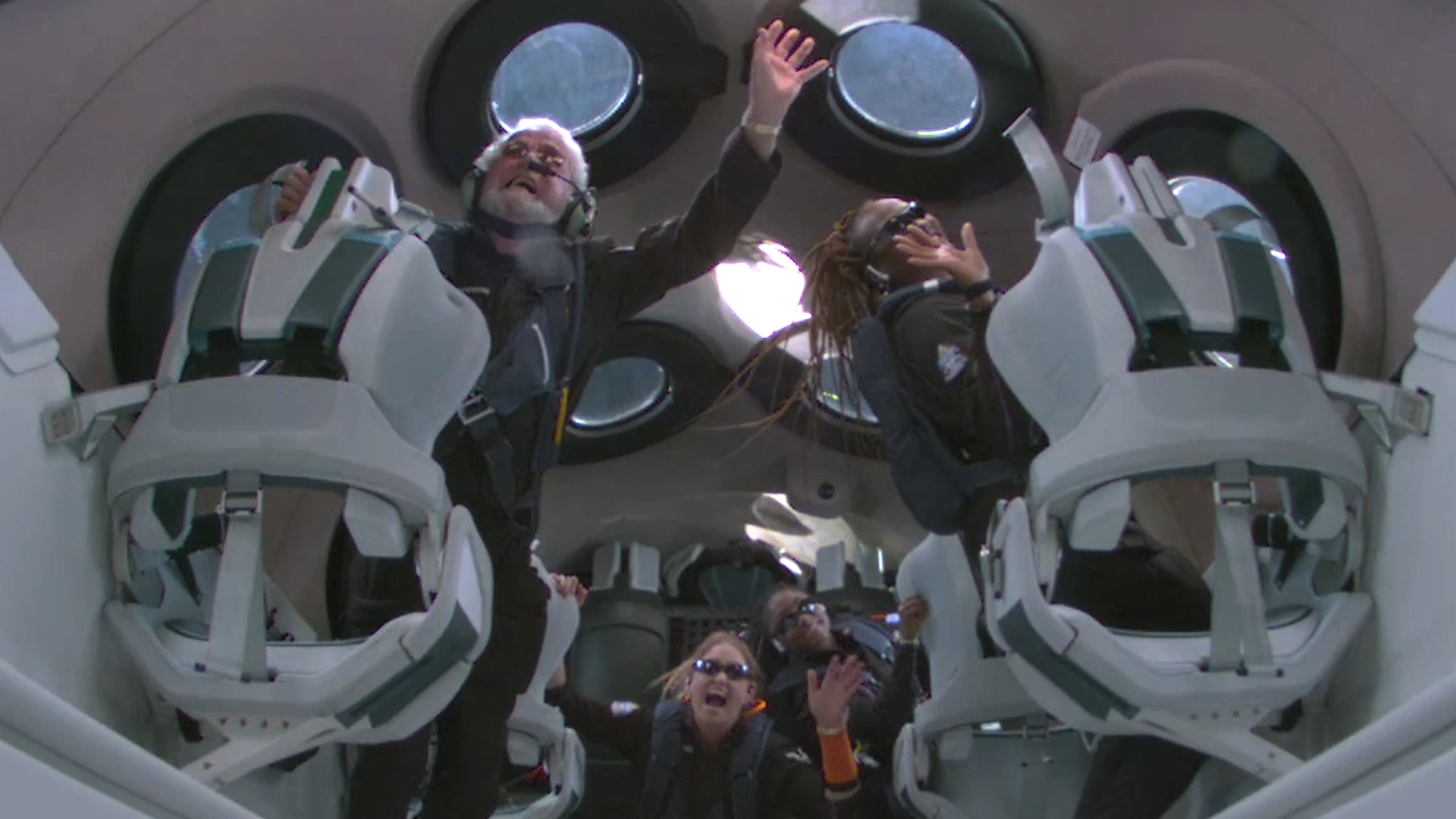
Virgin Galactic plans to launch Unity roughly once per month from here on out. But the company's overall flight cadence could pick up significantly in a few years, when its new "Delta class" of space planes begins coming online. Those vehicles will be capable of flying once per week, Virgin Galactic representatives have said.
"That's going to be a big sea change when that occurs," Mike Moses, the company's president of spaceline missions and safety, told Space.com in late May. "I'm really looking forward to that from my commercial operations perspective. That's one of the reasons I joined this company, was to get to a place where space travel is a lot more routine for more folks."
Editor's note: This story was updated at 12:50 p.m. ET on Aug. 10 with the official flight statistics from Virgin Galactic. It was updated again at 3:30 to note that Mayers became the youngest person to reach space.

Michael Wall is a Senior Space Writer with Space.com and joined the team in 2010. He primarily covers exoplanets, spaceflight and military space, but has been known to dabble in the space art beat. His book about the search for alien life, "Out There," was published on Nov. 13, 2018. Before becoming a science writer, Michael worked as a herpetologist and wildlife biologist. He has a Ph.D. in evolutionary biology from the University of Sydney, Australia, a bachelor's degree from the University of Arizona, and a graduate certificate in science writing from the University of California, Santa Cruz. To find out what his latest project is, you can follow Michael on Twitter.
